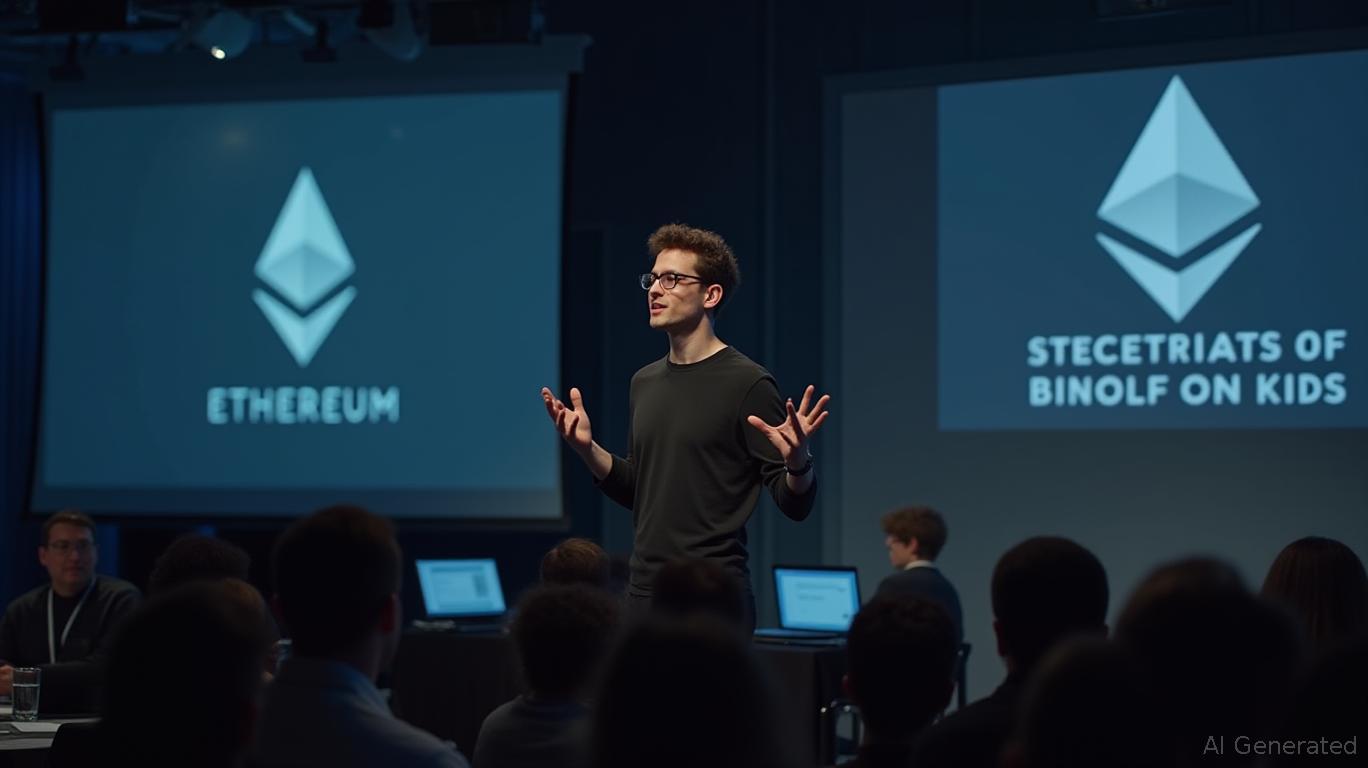BlockDAG’s innovative combination of DAG and PoW technology, along with its equitable pricing approach, marks a new phase in blockchain’s journey toward greater scalability
- BlockDAG's $430M presale (27B tokens at $0.0015) and $0.05 listing price highlight its fair pricing model and market traction ahead of November's Genesis Day. - The hybrid DAG-PoW architecture, Binance AMA roadmap updates, and F1 team partnership position BDAG as a scalability-focused blockchain rivaling Bitcoin's security. - CertiK/Halborn audits, 3.5M X1 miner users, and 300+ dApps on testnet reinforce trust in its transparent governance and developer ecosystem growth. - Analysts project $1 price by 20
BlockDAG (BDAG) is capturing increasing interest within the crypto community, having raised $430 million and distributed more than 27 billion tokens, making it one of the most ambitious blockchain ventures set for 2025. With its listing price confirmed at $0.05 and the current price at $0.0015 in Batch 31, BlockDAG is gaining traction ahead of its Genesis Day event on November 26. An upcoming

BlockDAG’s core technology merges Directed Acyclic Graph (DAG) with Proof of Work (PoW), allowing for concurrent block validation, easing network congestion, and maintaining security standards comparable to Bitcoin, as previously reported. The live testnet already enables micropayments, machine-to-machine interactions, and is compatible with EVM, making it easy for
CertiK and Halborn have audited the project, confirming the reliability of its vesting processes, contract structures, and treasury safeguards. These security measures, along with multi-signature verification and delayed execution protocols, help build confidence in a sector often cautious of speculative ventures. The community is expanding rapidly, with more than 3.5 million users on the X1 mobile miner and swift hardware distribution.
Strategic alliances are boosting BlockDAG’s profile. Its partnership with the BWT Alpine Formula 1® Team, announced at Token2049, features interactive fan simulators, international hackathons, and Web3 activity zones. This collaboration, part of the “Crypto Fast Lane” initiative, has propelled BlockDAG’s recognition beyond the crypto industry, connecting it with mainstream audiences. Additionally, a $600 million roadmap includes DeFi solutions, cross-chain bridges, and a crypto payment card, while hackathons with HackerEarth and partnerships with rugby and cricket leagues are set to foster both developer and fan participation.
The launch plan is designed to promote market stability, with a six-week strategy that covers mainnet rollout, community node activation, and staggered exchange listings to support liquidity and stable price formation. This measured approach stands in contrast to projects that often see sharp price swings on launch day. Analysts believe BDAG could reach $1 by 2026 if its current momentum continues, thanks to its operational testnet, growing user base, and completed security audits.
While BlockDAG remains in the spotlight, other tokens are also influencing the market. Binance Coin (BNB) has climbed to $1,300, reclaiming the third spot in market capitalization, according to a
The Binance AMA on October 24 is set to showcase progress on the roadmap, including updates on Keynote 4 and GENESIS DAY. With 4,500 developers working on more than 300 dApps on the live testnet, as reported by a
As the crypto sector faces broader economic challenges, projects like BlockDAG that emphasize scalability, openness, and real-world application are emerging as frontrunners. With $430 million secured and a hybrid architecture set to transform blockchain scalability, BlockDAG’s progress mirrors the shifting priorities of a maturing crypto industry.
Disclaimer: The content of this article solely reflects the author's opinion and does not represent the platform in any capacity. This article is not intended to serve as a reference for making investment decisions.
You may also like
Ethereum News Today: Buterin: The Ethereum Blockchain Remains Secure, While Off-Chain Trust Poses Risks
- Vitalik Buterin warns Ethereum's chain is secure against 51% attacks but off-chain systems like oracles and bridges face collusion risks. - Historical DeFi failures (bZx, Compound) highlight real-world losses from unverified off-chain data, costing millions in damages. - Ethereum's $3,934 price (Oct 2025) reflects short-term gains but 13.75% 60-day decline amid growing Layer 2 adoption and ETF speculation. - Buterin stresses need for on-chain verifiability as SEC scrutiny and validator trust challenges r

Is Target's Plan to Eliminate 1,800 Jobs Enough to Reinvigorate the Struggling Retailer?
- Target Corp. plans to cut 1,800 corporate roles (8% of headquarters staff) under new CEO Michael Fiddelke to address operational inefficiencies and stagnant sales. - The restructuring targets 1,000 current employees and 800 open positions, focusing on U.S. managerial roles, as Fiddelke aims to streamline operations and reposition the retailer. - Analysts question the strategy’s effectiveness, citing unresolved challenges like shifting consumer preferences and economic pressures, despite cost-cutting effo

Bitcoin Updates: Can the Malaysia Summit Ease Global Market Tensions Amid U.S.-China Trade Negotiations?
- U.S. and China restart high-level trade talks in Malaysia to ease tensions spilling into global markets and Bitcoin volatility. - U.S. Treasury Secretary Bessent and Chinese VP He Lifeng address tariffs, rare earths, and trade imbalances ahead of a potential Trump-Xi summit. - Unmet 2020 trade deal commitments and Trump's 145% tariffs on Chinese goods have deepened the trade war, destabilizing supply chains and crypto markets. - Bitcoin dropped to $108,000 amid fears of prolonged hostilities, highlightin
Centralized Infrastructure Causes Issues for Decentralized Crypto During AWS Outage
- AWS outage exposed crypto platforms' reliance on centralized infrastructure despite resilient blockchains. - 70% of Ethereum nodes hosted on major clouds like AWS, creating systemic risks per Coinotag. - Experts advocate hybrid models (e.g., Filecoin) and multi-homing to mitigate single-failure points. - Regulatory compliance and speed challenges hinder adoption of decentralized alternatives. - Industry faces balancing scalability, compliance, and distributed architecture for true decentralization.